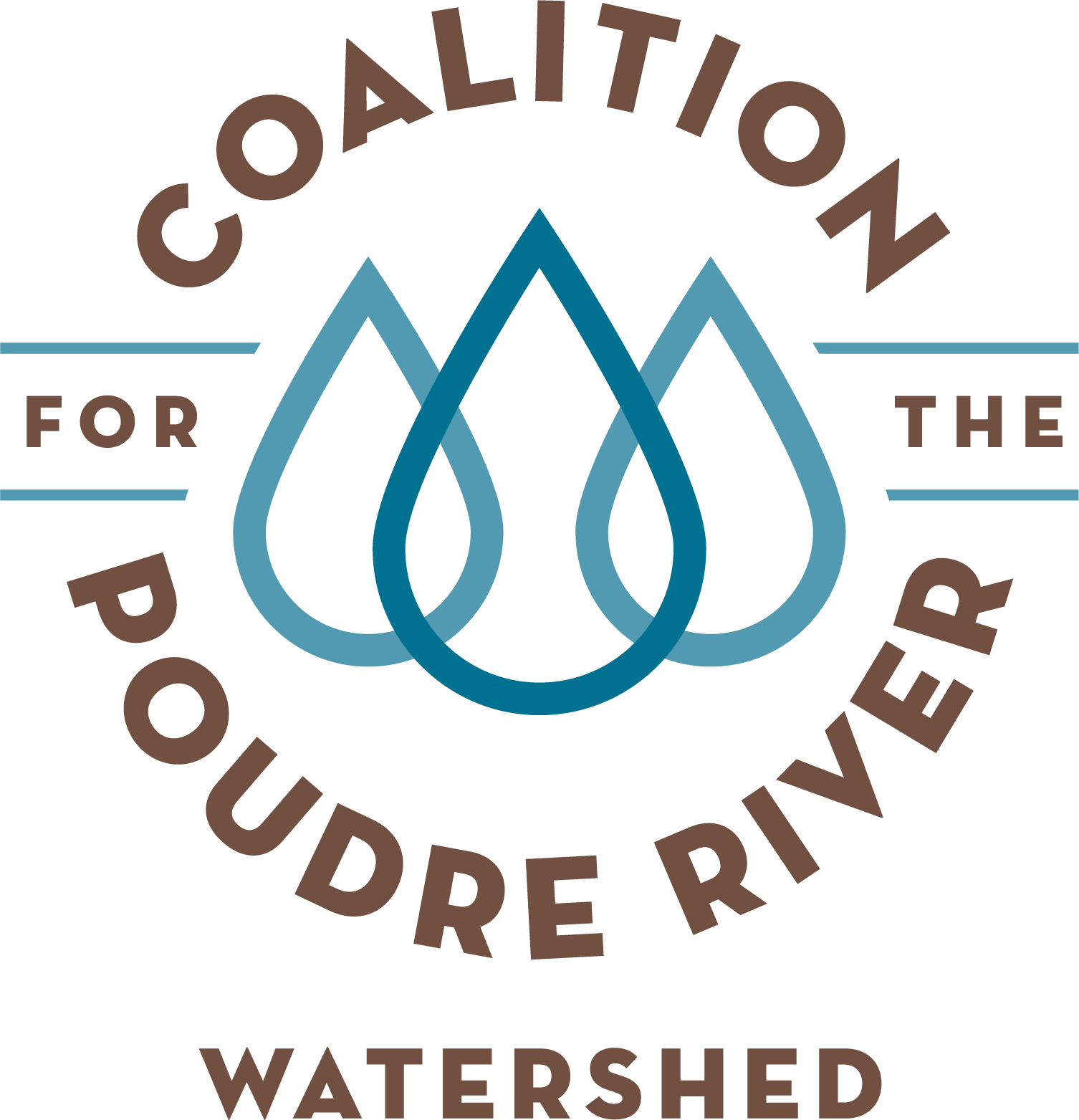The Cameron Peak Fire: CPRW's Role in the Recovery
Regrowth can already be found in areas burned by the Cameron Peak Fire, a sign of hope in an ecosystem severely damaged by the state’s largest wildfire in history.
In the summer of 2012, the High Park and Hewlett Gulch wildfires burned almost 90,000 acres of the Poudre River Watershed. The scale and intensity of these wildfires brought local water utilities, natural resource agencies, local non-profits, and businesses together to plan and prioritize post-fire restoration needs. In 2013, out of this effort to collaborate on restoration, the Coalition for the Poudre River Watershed (CPRW) was created. CPRW works across the entire Poudre Watershed - from headwaters to the confluence with the South Platte River - on issues relating to watershed and forest resilience, wildfire mitigation, and post-fire restoration.
The High Park Fire allowed CPRW and our partners to develop the relationships, knowledge, and experience to be better positioned to hit the ground running in the face of destructive wildfires.
Now, here we are in 2021, facing the aftermath of the largest wildfire in Colorado history – the Cameron Peak Fire. Our recent blog gave a detailed account of the destruction caused by the Cameron Peak wildfire, which, over the course of 112 days, burned 208,913 acres within the Poudre, Laramie and Big Thompson Watersheds.
Now, a massive response is needed for post-fire recovery and CPRW is playing four pivotal roles to help in this effort:
1. We are bringing the right people together to coordinate planning & needs - CPRW is a central part of the recovery team, leading the coordination of the water sub-committee, participating on the Steering Committee, and acting as a liaison with the Forest Service and others. Our staff is helping to guide the science-based planning and analysis that will form the foundation for prioritizing needs across the burn area.
2. We are organizing and leading critical post-fire restoration implementation - Along with our partners, CPRW will be responsible for coordinating and planning restoration implementation on private and public lands. Because these fires have touched multiple watersheds along the Front Range, CPRW is also helping provide resources to other watershed coalitions as they start their own post-fire recovery process. In addition, we are working with partners to leverage volunteers to take action and utilizing our existing Citizen Science Water Quality monitoring program to assist with tracking post-fire water quality.
3. We are helping with critical communications & public outreach efforts - CPRW is working with other watershed coalitions to develop resources for landowners affected by these wildfires to help guide them on actions they can take on their land to reduce negative impacts and bring the landscape back to a healthier condition. We are also helping to build an outreach program for our downstream communities so they can better understand how this devastating fire will affect them and what they can do to help.
4. We are fundraising - CPRW is working with partners to bring much-needed additional dollars to help the watershed recover. We are leveraging our existing donor and grant relationships to maximize dollars that our local governments are garnering to expand the impact of recovery work
Our watershed faces many challenges ahead. Together, as a community dependent on a healthy Poudre River, we can tackle this post-fire restoration work. If you are interested in donating to these efforts, please consider making a contribution to our Cameron Peak Fire Recovery Fund to help us tackle this important work.

